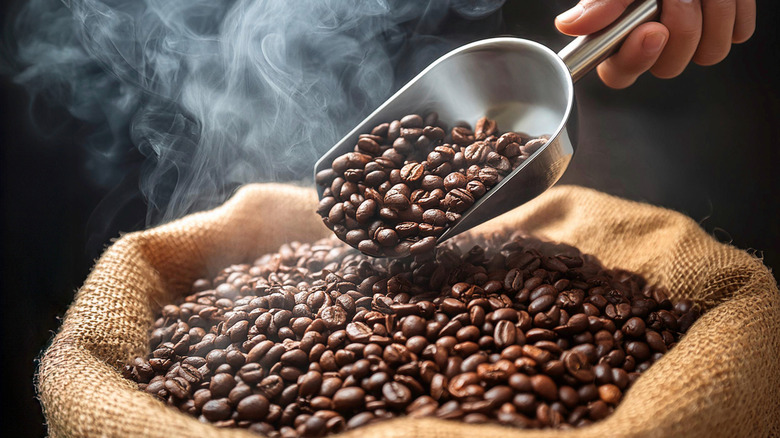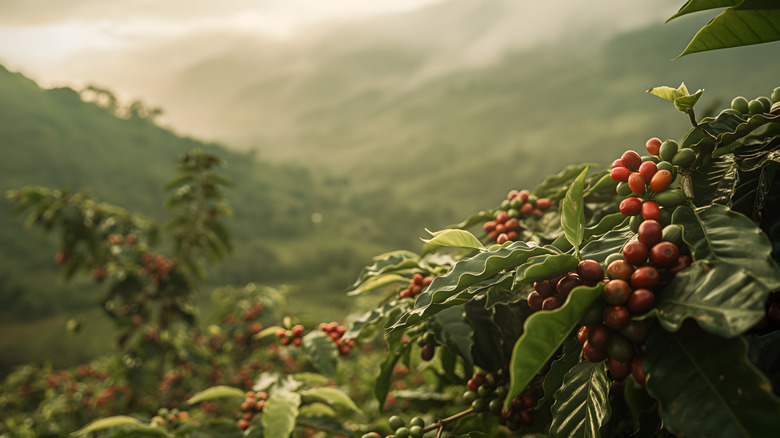Is An Espresso Bean Different From A Normal Coffee One?
Espresso beans and regular coffee beans are essentially the same. Despite their distinct flavors, they primarily originate from the same plant species, either arabica or robusta, though robusta delivers more caffeine. The key differences between an espresso and a regular coffee lie in how the beans are processed, roasted, and brewed.
During roasting, the sugars within the coffee bean undergo caramelization, breaking down and creating flavor compounds and brown-hued melanoidins. The caramelization process, along with the Maillard reaction (when amino acids and sugars combine), is responsible for the rich flavors and aromas we associate with a cup of coffee or an espresso. Espresso beans are typically roasted longer, resulting in a darker, oilier bean. This changes the bean's chemical composition by reducing acidity and boosting the bean's natural sugars to create a more intense flavor and aroma for espresso extraction. Roasters often create specific blends for espresso. These combine beans from different regions to achieve a balanced flavor and a delicate crema on top of a well-made espresso.
This variation in roasting, along with the different brewing techniques used, creates a range of flavors and tasting experiences. From the delicate, nuanced notes of a perfect, lightly roasted arabica pour-over that's easy to make with the right equipment to the intense flavor in a dark-roasted robusta that comes from learning how to drink an espresso like an Italian, the world of coffee offers something for every palate.
Diving deeper into coffee and espresso bean preparation
From the planting stage, coffee beans have characteristics influenced by their location, altitude, and overall processing methods, all of which impact the flavor of a cup of coffee or shot of espresso. Coffee beans come from cherry-like fruit from a woody evergreen coffee plant that grows in the "bean belt" between the Tropics of Cancer and Capricorn. After the coffee cherries are harvested, they undergo a process to separate the beans from the fruit. Arabica beans are typically wet-processed, which involves removing the outer layers of the fruit through fermentation and washing. This results in a lighter, delicate flavor. Robusta beans are often dry-processed, where the cherries are dried whole before the outer layers are removed, resulting in a strong, earthy flavor.
Once the raw beans are processed, they move to the roasting phase. Roasting happens around 550 degrees Fahrenheit, where the beans are constantly moving to ensure they are heated evenly. As the beans reach an internal temperature of 400 degrees Fahrenheit, they begin to brown and release caffeol, which is an oil responsible for coffee's aroma and flavor. To preserve these qualities, roasted beans are rapidly cooled with air or water.
Brewing also plays a significant role in the final taste of your caffeinated drink. Espresso is made by forcing hot water under high pressure through finely ground coffee beans over a short amount of time. Regular coffee is typically coarsely ground and brewed in hot water for longer periods of time, using methods like a pour-over, drip, or French press.


